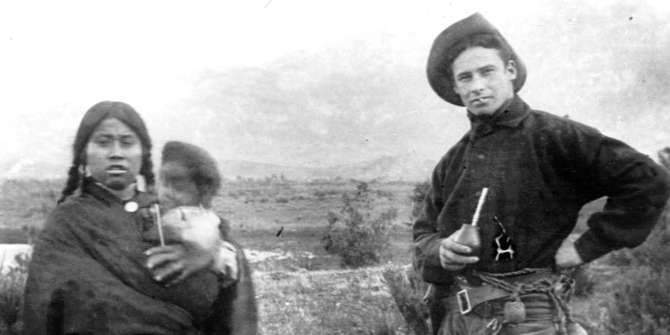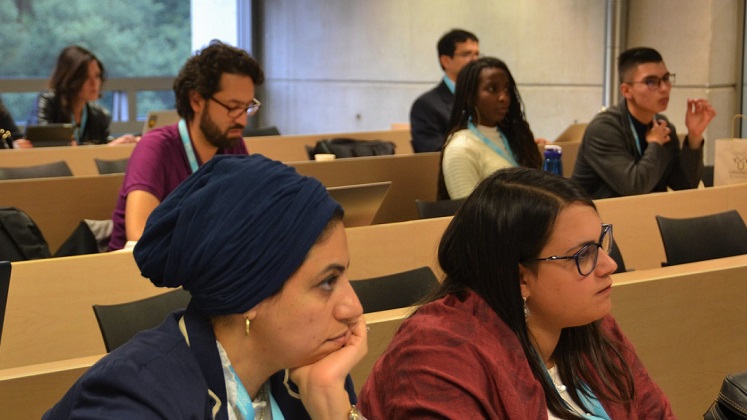Experiences of transitional justice the world over have demonstrated the importance of achieving public trust in the process. Combining comprehensive legislation and innovative, well-monitored delivery mechanisms in Colombia will help to ensure no one is excluded, write Elisa Cascardi, Adrienne Hathaway, Jorge Luis Silva Méndez, Diana Ortiz, Megan Rounseville and Juan Vargas.
• Disponible también en español
After over 50 years of internal conflict, resulting in around 220,000 deaths and internally displacing over seven million people, the Colombia’s government and the Revolutionary Armed Forces of Colombia (FARC) are now beginning to implement a negotiated peace deal. One of the major aims of the agreement and the legislation emerging from it has been to provide justice to victims of the conflict, both on moral grounds and as a means of achieving a lasting peace, which would represent a milestone in the country’s history.
For this reason, programmes and policies relating to effective transitional justice will be of the utmost importance. Other countries’ experiences of post-conflict provide some guidance on the interventions that work, as well as those that don’t.
In Chile, for example, the National Corporation for Reparations and Reconciliation (NCRR, 1990) was established to provide reparations to victims of human-rights violations during the Pinochet dictatorship. But victimhood was defined narrowly, leading to criticism over the exclusion of many victims of detention and torture. Only in 2004 was this definition revised and the registration period reopened. But the initial exclusion had already damaged citizens’ trust in the process.
In South Africa, meanwhile, the Truth and Reconciliation Commission made recommendations for a comprehensive reparations programme organized by the Reparations and Rehabilitation Committee (RRC). This committee supported the government in planning and implementing reparations, yet it did not have an enforcement mechanism with which to hold the government accountable if it failed to provide reparations. Today, eleven years after the RRC was established, implementation shortfalls have left the government unable to deliver fully on its promises, again hurting public trust.
The Colombian Government, for its part, has taken a comprehensive approach, mainly in the form of the Victims and Land Restitution Law 1448 (2011). Outlining reparations for victims and guaranteeing access to lost lands, education, health, and housing, this law has been heralded for its human rights perspective and wide-ranging response to victims’ needs.
But five years on, the road to proper implementation of the government’s multi-faceted commitment is a rocky one. When the law was passed in 2011, the government estimated the number of victims of at roughly four million. But the number is now eight million and rising. The dual challenge is how to effectively and cost-efficiently identify and register such a large number of victims before providing the comprehensive justice enshrined in law. Some victims do not have access to justice services to file their claims; others have been classified as victims but are unaware of how to access services; and those in rural areas are often deprived effective access by virtue of geography alone.
The Colombian government has chosen a particularly innovative solution to these issues: Mobile Victim Attention and Orientation Units (Unidad Móvil de Atención y Orientación a Víctimas, UMAOV). These are large vehicles that tour isolated rural municipalities, expanding into “one-stop shops” for vital justice services. A single vehicle carries representatives of the National Victims Unit, the Public Defender’s office, and the Ministry of Justice, who together provide two-day clinics where victims can register or update their claims, file appeals, obtain clear information about their rights under Law 1448, or receive psychological orientation and legal aid. The UMAOV programme aims to reach individuals who are especially vulnerable, cannot reach administrative offices, or may be unaware of the provisions of Law 1448. On average, one UMAOV is able to serve 200 individuals per community, or 100 participants each day. Already the programme has served more than 60,000 people.
Proper evaluation of the UMAOV programme will also serve as a critical feedback mechanism for the government to learn about victims’ needs as they proceed from registration of claims to full access to the services detailed in Law 1448. A joint World Bank-CAF-Universidad del Rosario research team is currently conducting a rigorous randomised phase-in evaluation to find out how accessing justice via the UMAOV programme impacts citizens’ perceptions of the state, distribution of reparations, uptake of services, and ultimately victims’ perceptions of justice.
The evaluation has randomly chosen two groups of 30 municipalities which will respectively receive UMAOV services in first and second semesters of 2016. Surveys will be collected from over 7,000 people, with responses before exposure to UMAOV (control group) compared to responses after exposure (treatment group). Baseline (pre-treatment) and endline (post-treatment) panel surveys of community members will also be carried out both to understand programme impacts at the community level and to gain insight into the demographics of UMAOV uptake – especially gaps in participation that may need to be tackled by other means.

The entities charged with delivering justice will need to set up spaces to analyse and digest evaluation results as they emerge, as creative problem-solving will be needed to adapt to victims’ changing needs. The ups and downs of the peace negotiations and the subsequent referendum have made it abundantly clear that the road to justice will be long and challenging. But the more Colombia is able to learn from its own and others’ experiences, the smoother the road will become. Sustained and innovative community engagement, registration and recording of victims’ claims and testimonies, and large-scale evaluation of justice programmes are all crucial in promoting a lasting peace.
Notes:
• The views expressed here are of the authors rather than the Centre or the LSE
• This article builds on an earlier post for the LSE Department of International Development blog
• Please read our Comments Policy before commenting
• Author affiliations: Elisa Cascardi (LSE International Development, World Bank), Adrienne Hathaway (World Bank), Jorge Luis Silva Méndez (World Bank), Diana Ortiz (World Bank), Megan Rounseville (World Bank), and Juan Vargas (Universidad del Rosario y CAF-Development Bank of Latin America)





